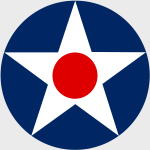Corgi AA35312 USAAC North American B-25B Mitchell Medium Bomber - 40-2261, "The Ruptured Duck," Doolittle Raid, USS Hornet (CV-8), April 18th, 1942 (1:72 Scale)
"In the future, war will be waged essentially against the unarmed populations of the cities and great industrial centers."
- Italian General Giulio Douhet
 Built by North American, with no previous experience on multi-engined aircraft, the B-25 Mitchell proved to be one of the most versatile combat aircraft to see action in World War II. So impressed with what they saw on the drawing board, the USAAC ordered 184 aircraft -- to be designated the B-25 -- before metal had even been cut on a revised design.
Built by North American, with no previous experience on multi-engined aircraft, the B-25 Mitchell proved to be one of the most versatile combat aircraft to see action in World War II. So impressed with what they saw on the drawing board, the USAAC ordered 184 aircraft -- to be designated the B-25 -- before metal had even been cut on a revised design.
Christened the Mitchell after maverick army bomber proponent William 'Billy' Mitchell, the bomber fought not only with the USAAF in the Pacific and ETO/MTO, but also with US Navy/Marine Corps, British, Dutch and Australian units. By war's end, the veteran Mitchell had outlasted its rivals from Douglas and Martin to become the most prolific American medium bomber of the conflict. Today some 34 remain airworthy across the globe.
This particular 1:72 scale replica of a B-25B Mitchell medium bomber was nicknamed "The Ruptured Duck," which took part in the Doolittle Raid over Japan, during April 1942.
Sold Out!
Dimensions:
Wingspan: 11-1/4-inches
Length: 8-3/4-inches
Release Date: July 2013
 Historical Account: "The Ruptured Duck" - One of the sixteen North American B-25 Mitchell medium bombers that took part in the famous Doolittle Raid of 1942, 'The Ruptured Duck,' along with Doolittle's own aircraft is one of the best known of the aircraft that took part. Conceived as a way to boost the morale of a nation still reeling from the attack on Pearl Harbour, the Doolittle Raid consisted of the USAAF flying a number of B-25 Medium bombers off an aircraft carrier close to Japan, bombing Tokyo and then flying on to land in China. While material damage would be slight, the effect on morale back in America, and detrimentally in Japan, would be huge.
Historical Account: "The Ruptured Duck" - One of the sixteen North American B-25 Mitchell medium bombers that took part in the famous Doolittle Raid of 1942, 'The Ruptured Duck,' along with Doolittle's own aircraft is one of the best known of the aircraft that took part. Conceived as a way to boost the morale of a nation still reeling from the attack on Pearl Harbour, the Doolittle Raid consisted of the USAAF flying a number of B-25 Medium bombers off an aircraft carrier close to Japan, bombing Tokyo and then flying on to land in China. While material damage would be slight, the effect on morale back in America, and detrimentally in Japan, would be huge.
'The Ruptured Duck' got its name from scraping its rear fuselage on the runway during training. After bombing Tokyo the aircraft flew on to China where it crashed into the sea near Shangchow. All of the crew survived, though the pilot Lt. Ted Lawson lost a leg in the ditching.


